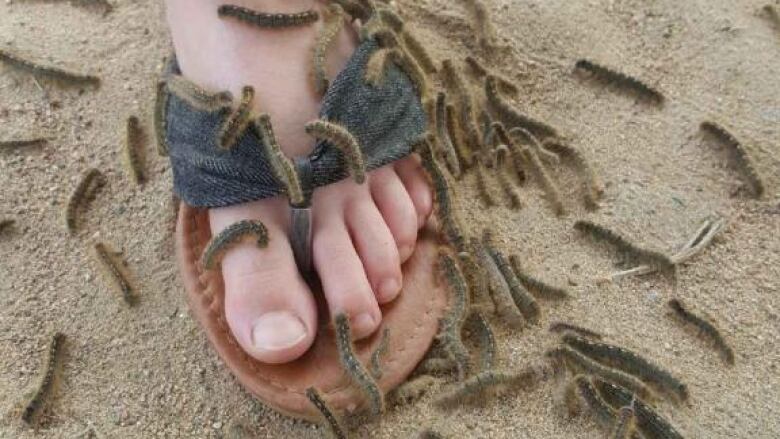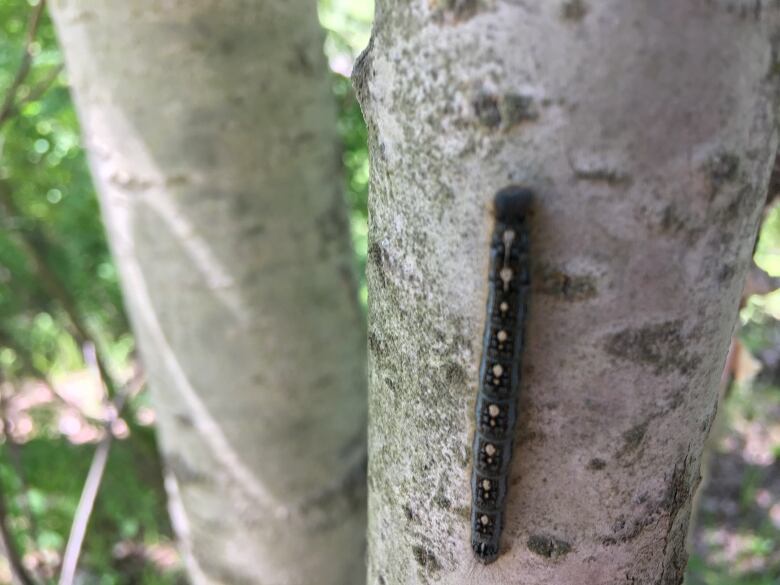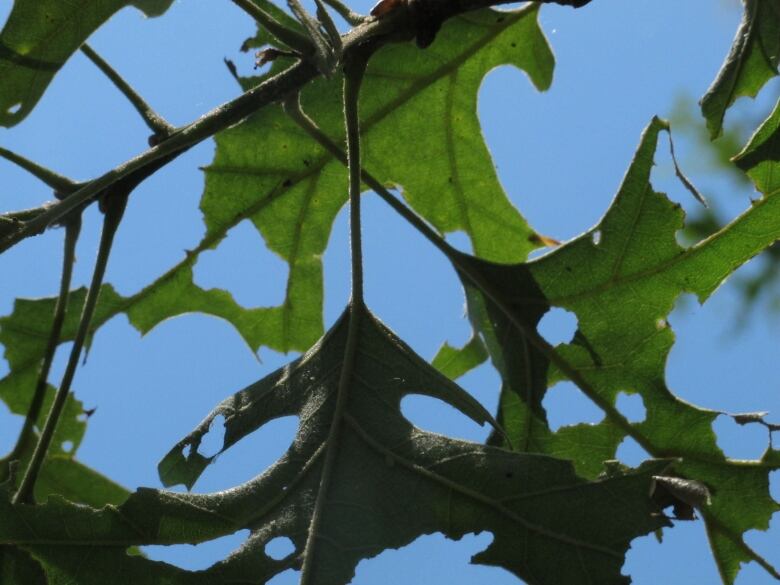'Tell people not to panic': Experts say Canada's caterpillar and worm infestation will end
The crawling critters of spring may look gross, but they're nothing to worry about

Maybe you're in Toronto, sitting on a patio, finally enjoying some warm weather, only to have them rain down on your table. Or maybe you find the ground covered with themin Saskatoon as you walk out to your garage.
Caterpillars. They seem to be everywhere.
From the Prairies to the east coast, Canadians are battling creepycrawlers that seem to be out in abundance this spring.
In Ontario, there's an infestation of cankerworms (also knownas inchworms). Saskatchewan is battling tent caterpillars. Manitoba has both of these as well as elm spanworms, prompting some to call it the "year of the caterpillar," while there's a "plague" of crane fly larvae in Newfoundland.
Just how bad do some people have it?Here's what it looked like forTammi Hanowski at her homesouth of Saskatoon.
"No matter what you do you'll sweep them, you'll vacuum them and in 10 secondsit's like they're just there again," she told CBC'sCreedenMartell.
- Montrealers 'don't need to fear' tent caterpillar invasion
- St. Lazare plagued by so many caterpillars they're burying them in pails
- 'Like it was biblical': Kippens lawn infested with crane fly larvae
While it may seemlike a sign of biblical end times to some, it's all part of a natural cycle though not one entomologists completely understand.
"This is typical of these cycles that are anywhere between eightand 12 years," Judith Myers, of the University of British Columbia's zoology department, told CBC News.
"It's very, very difficult to find what the actual factor is that causes some outbreaks to be longer than others, some declines to go lower than others."

That's because there are various factors that can influence caterpillars' boom-or-bust life cycle. Things like weather conditions (they prefer dry and warm), the presence of parasitoids (which lay eggs inside the egg sacs of caterpillars in the larval stage),diseases and fungi all influence their numbers.
'Year of the caterpillar'
In the case of tent caterpillars, for example, the moths produce eggs sacs where the larvae develop before going into a dormant phase called diapause. In spring, the larvae hatch and emerge as the worms we're now seeing feast on our trees.
And if the conditions are right such as a warm, dry spring that many parts of the country experienced last year they thrive.
"It's definitely the year of the caterpillar," Winnipeg insect-control branch superintendent Ken Nawolskytold CBC'sBartley Kives.
'They will go away'
All these caterpillarsmay be an eyesore, but they're nothing to worry about, Myers said.
"Tell people not to panic about the caterpillars," Myers said. "They will go away."
Greg Pohl, an insect and disease identification officer with Natural Resources Canada, said the influx of cankerworms is also not a big deal.

"There are always outbreaks someplace in Canada,"Pohltold CBC News."And it's not always in cities, though certainly there've been a lot of outbreaks in urban areas this year."
He said "huge population outbreaks" happen occasionally. "It's just a matter of all the planets lining upin terms of the right weather conditions in the winter and early spring, and the population levels of the things that eat these things, like birds and other insects."
There are more than 500 different species of cankerworms, Pohl said, and they fall undertwo distinct types fall or spring,depending on when they lay their eggs. The ones outnow are fall cankerworms. You might notice them as bright green worms that sometimes dangle from leaves, or they mightbe brown.

The worms and caterpillars consume the leaves of trees, but the leaves will grow back. Sowhile your tree may look pretty sad in June, by August it should be back to its full, green self, Myers said. Unless, that is, it's been stressed for some timeor it's faced a few years of outbreaks.
"One year isn't generally enough to cause all the trees to die," Pohl said. "It'll look terrible in the city, and people don't like to see that, but trees are pretty tough."
And while some cities may be thinking about spraying, it might be too late. Pohl said that spraying has be done early in the life cycle during the larval stage or when worms are young to be effective. In the meantime, he says there's not much you can do. There is special sticky tape that can be affixed to trees that will trap them. But aside from that?
"The best thing [people] can do is be patient and just accept that the trees are going to look a little ragged this year," Pohl said.
With files from Creeden Martell and Bartley Kives












_(720p).jpg)


 OFFICIAL HD MUSIC VIDEO.jpg)
.jpg)



























































































